- Number & Place Value
- Addition & Subtraction
- Measurement & Geometry
- Play-based Learning
- Formative Assessment
- Planning & Programming
- Art & Craft
- Digital Learning
- Sustainability
- Transition to School
- Systems & Routines
- Classroom Themes
- Learning Displays
- Decorative Displays
- Emotional Literacy
- Staff Activities
- Teaching Literacy Phonics Reading Writing Math Number & Place Value Addition & Subtraction Measurement & Geometry Teaching Practice Play-based Learning Formative Assessment Planning & Programming Other Categories Art & Craft Digital Learning Fine Motor Sustainability Transition to School
- Classroom Classroom Management Behaviour Systems & Routines Storage Decor & Displays Classroom Themes Learning Displays Decorative Displays DIY & Hacks DIY Hacks
- Well-being Social-emotional Learning Emotional Literacy Kindness Gratitude Teacher Well-being Staff Activities


Kindergarten Math Problems, Worksheets & Games
These kindergarten math problems will help you teach early math skills in a fun, interactive way! In this blog post, you'll find printable worksheets, task cards, and games to make math hands-on and engaging.
Kindergarten is one of the most critical years for young learners. This is where we build a strong foundation in number sense, teach the most basic operations, and give names to the shapes in the world around us.

Because this time is so important, we must use evidence-based instructional practices that genuinely support our students' growth while also providing them with exciting, engaging activities to get them thinking and moving! These kindergarten math problems and resources were designed to be easy for you to prepare, developmentally appropriate and engaging for kids, and aligned with your state or national instructional goals.

Although many of the resources are available in my shop or Freebee Library, they are all included as part of The Hive! The Hive is an all-in-one digital teacher planner with thousands of printable resources, videos, and interactive digital learning tools which you can schedule into your day or pull up at a moment's notice. It's teaching smarter, not harder!
If you're teaching primary math this year, you'll also love the mathematics learning programs we have created for K-2! You'll find carefully designed lesson plans with differentiation strategies, matching resources, and activities. Just log in, search for the skill you're covering, and use it instantly!
Sound dreamy? Try it for free today with our 7 day free trial!
Printable Kindergarten Math Problems & Activities
Our kindergarten kids have a lot of learning to do this year. These printable and interactive resources are the perfect tools to support them in that process.
Number Recognition
This is where it all starts! One of our first steps is to help our kindergarten students understand that each numeral represents a specific number of units. I recommend leaning heavily on manipulatives, like dominoes, bear counters, the place value chart, ten frames, dice, and more.
The more representations, the more deeply your students will understand how numbers work. The following printable kindergarten math worksheets are a great place to start!
Number Printable Worksheets - These print-and-go worksheets are perfect for kindergarten!

There are several different levels, so you can make them more complex as students learn. They can even be used as play dough mats or tracing pages!

Number Match - There are four spaces on each numbered mat, and students find images matching each number from a bank of cards. I love these for small groups or independent practice!

Number Hexagons - These task cards are perfect for a math center or maths rotations! Just match the numeral with the corresponding image.

Number Match Ice Cream Game - In this game, the cones show the number, and students must find that number of scoops with different representations of the number. It's so helpful for consolidating both number identification skills and counting skills at the same time!

Swat the Fly Number Templates - This freebie is a fun, hands-on way to help students practice identifying numerals. I like to print these out and place them around the room, and have students say the name of the number as they swat it.

Get even more kindergarten number writing practice with these templates and activities! They're great for preschool, too.
One of the most important concepts young students learn is the idea of place value, which requires plenty of meaningful opportunities with number recognition and counting. Although many of the activities above can be used for counting, too, these ones focus on this specific skill.
Disappearing Digits - Kids fill in the missing numbers on these math charts. I like to put these in pocket sleeves to use them again and again!

Monster Eyes Counting - These free kindergarten math worksheets so much fun! Have your kids add the correct number of googly eyes to the monster bodies. They'll love arranging the eyes in different ways, which is a great way to practise those fine motor skills, too!

Build a Fence - Students line up the popsicle sticks in number order to complete the fence. It's simple, but it works!

I Spy & Count - Students will love playing I Spy and consolidating their early number skills with these I Spy and Count Mats!

Numbers Before & After - This open-ended activity can be used to consolidate early number and counting skills, as students identify the number/s after a given number. Students roll a dice and write the 4 numbers that come after. You can further differentiate by the number of dice used, or the number of sides on the dice.

Simple Addition
We spend a lot of time focusing on addition skills in the early years, as this concept is the foundation of subtraction and multiplication in later years.
We have created units for every element of K-2 math in The Hive, so you can easily pull up any of the lesson plans, slides, games, videos, and printables to support your instruction any time you need them! There are also loads of digital learning tools for your maths lessons, such as digital counters, manipulatives, ten frames, place value charts and more.
The following activities are just some of the hundreds of activities included in The Hive's K-2 mathematics units.
Finger Addition 1-10 - The kindergarten worksheets are a great bridge between finger counting and using symbolic representations! They can even count along with their own hands.

Counting On Task Cards - These cards make it easy to practise counting on, which is one of many addition strategies which we teach to our kindergarten students.

Addition Towers - Give your students a pile of unifix cubes to solve each of the math problems. Since this task is open-ended, they'll naturally find several different ways to solve each problem. These would be wonderful for math talks!
Number Line Addition Task Cards - The number line is such a useful concept to teach early on, especially as it connects to telling time and measurement later on. These free task cards use the jump strategy to practise addition up to 20.

Our Hive members can also use our digital number line to explicitly teach this concept too!

Addition Stories - These open-ended worksheets are one of my favourite activities! Kids can use these kindergarten worksheets as a backdrop to create their own story problems or you can fill out the sheet yourself and see how many different word problems your students can come up with based on the image.

This would be great for a daily math discussion! You can even have your student of the day create their own custom scene.

Part Part Whole Activities
Students create different totals using the legs of characters from the book. See if they can find different ways to make the same total! Print multiple sets of the picture cards for students to combine to create different totals:

Number Bond Activities
Students can demonstrate their understanding of number bonds to 5, 10 and 20 with these differentiated number bond task cards.

Simple Subtraction
Once students understand addition as combining parts to find the whole, they're ready for subtraction. These highly visual examples will give them great practice!
Takeaway Trash - This game highlights the idea that subtraction is about taking numbers apart. Students must "sweep" the subtracted part into the recycling bin to see what's left. Great for stations!

Finger Subtraction Templates - These templates are much cleaner than colouring on your fingers but achieve the same effect.

Hungry Shark Subtraction Mats - I love that these sheets model how to complete subtraction word problems and use the horizontal form at the same time. The repetition will really help reinforce these skills!

Counter Subtraction - The counters are a great next step after counting with fingers. The counters are still visual, but they're a little more abstract. Since these worksheets are open-ended, they can be used over and over with different numbers.

For more subtraction resources, check out these posts:
- 10 Fun Subcraction Worksheets for Kindergarten
- Best 2nd Grade Math Subtraction Worksheets & Activities . Although this one is written for older kids, there are resources to cover a variety of strategies that are also covered in kindergarten and first grade!
In kindergarten, our young learners are expected to learn how to recognize basic 2D and 3D shapes. I've prepared a whole host of geometry resources on The Hive, including 3 weeks' worth of digital lesson plans, digital slides, task cards, tracing mats, printable worksheets, and more!
There are so many shapes activities on The Hive that I wrote an entire blog post about it. Visit 20+ Printable Kindergarten Shapes Worksheets & Activities here.
Looking for more?
This is just the start! There are so many more resources available in my shop, but to really level-up your mathematics instruction, I recommend joining The Hive.
You will have instant access to these educational materials and so much more! Every activity is designed using evidence-based methods so you can trust they're truly effective.
Plus, you'll LOVE our interactive digital learning tools. Here are just a few examples!

Start your free 7-day trial of The Hive and check them out!
Kindergarten Lessons
Involve me and I learn...
Math Teaching/Learning
KINDERGARTEN PROBLEM SOLVING

Learning how to approach and solve problems early in life, not only helps children enjoy and look forward to sorting them out, it also helps them make and keep friends.
Preschool and kindergarten problem solving activities give children an opportunity to use skills they have learned previously and give you an opening to teach new problem solving strategies.
Introduce the vocabulary of solving problems with stories, puppets and everyday situations that occur. “We only have 10 apples but there are 20 students. This is a problem . Let’s think of some ways that we can solve this problem ?”
Use terms like, “a different way, let’s brainstorm, that’s a challenge, let’s think of some different solutions”.
How do I develop a problem solving approach?
Asking children questions such as , “How would you…?” or “Show me how you could…?”, help set the stage for teaching with a problem solving approach. Keep problem solving topics about subjects that interest the students. Kids are constantly trying to problem solve as they play.
Students are learning to:
- Identify problems or challenges
- Fact find (what do I know, what have I tried)
- Think of ways to solve the problem (brainstorm, creative thinking, generate ideas)
- Test their ideas
What preschool and kindergarten problem solving strategies can I teach?
Young children need real objects, pictures, diagrams, and models to solve problems. Start with real objects and move slowly to diagrams and pictures. Any of the following problem solving strategies will help them work through the four steps above:
- using objects
- acting the problem out
- looking for patterns
- guessing and checking
- drawing pictures
- making a graph
- teach with projects
Play creates classroom opportunities for problem solving

Perhaps a child is getting frustrated as he/she plays with blocks. To help him/her focus on the problem ask questions such as:
- What are you trying to do with your blocks?
- What isn’t working?
- What have you tried?
- Can you think of another way to stack the blocks?
- What else can you try?
Encourage creative thinking
Reinforce creative thinking, not results. The ability to solve problems and think creativity is important.
Talk about the different ways the child tried to solve the problem rather than the outcome. “Joe tried three different ways to stack the blocks. That was a great effort, Joe.”
Social classroom problem solving opportunities are abundant

- Identify the problem – Talk about the problem. For instance, some children may be worried because other kids are hiding the center markers for the play center and giving them to their friends. Other kids are not getting turns.
- Fact find – There are only 4 center markers for the play center because it is small and more than 4 kids would be too crowded. Some kids are hiding them so they can play with the same children each time.
- Brainstorm ideas – How can everyone have turns? What ideas do you have? What could we try?
- Test the idea – Let’s try that idea and meet again tomorrow and see how its working.
Investigating and Problem Solving
Using short periods of time examining and investigating objects, such as feathers or rocks, captures children’s attention and challenges them to inquire, to develop mind sets of being problem solvers and to think independently. Find a sample lesson here…

- Kindergarten Math Worksheets
Building a Strong Mathematical Foundation: Empowering Children from the Start
Learning fundamental math in kindergarten is crucial. It builds confidence and prepares children for more advanced concepts. Our kindergarten math category includes worksheets for early stages and slightly more advanced levels. They cover numbers, counting, measurement, and problem-solving skills. Additionally, we offer free worksheets on addition, subtraction, fractions, place value, graphs, and patterns. These materials are designed to be both fun and educational. You can use all our free math worksheets online, except for the premium collection. They serve as valuable tools for parents and teachers.
Please share our free worksheets. Thank you!
Free Math Worksheets
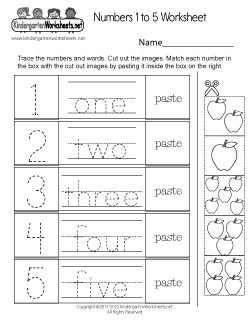
Flexible Options: Download, Print, or Use Our Free Math Worksheets Online
- Printable Worksheets - Effortlessly Print from Your Web Browser
- PDF Worksheets - Easily Download and Access Files Anytime
- Interactive Digital Worksheets - Enjoy an Engaging Online Experience
Our math worksheets are designed to be convenient for educators and families. We offer three options to access our free worksheets. You can download the PDF file, print it from your browser, or use the online version of our kindergarten worksheets. These options allow you to save, print, or complete our worksheets directly on our website. By providing these flexible options, we aim to make learning math accessible, convenient, and engaging for teachers, parents, and kids.
Kindergarten Numbers Worksheets
- Color By Number Worksheet
- Numbers 1 to 5 Worksheet
- Numbers 6 to 10 Worksheet
- Coloring Numbers Worksheet
- Color by Code Worksheet
- Identifying Numbers Worksheet
- Number Match Worksheet
- Practice Writing Numbers Worksheet
- Preschool Numbers Worksheet
- Prime Numbers Worksheet
- Snail Number Match Worksheet
- Traceable Numbers Worksheet
- Count and Match Numbers Worksheet
- Number One Worksheet
- Number Two Worksheet
- Number Three Worksheet
- Number Four Worksheet
- Number Five Worksheet
- Number Six Worksheet
- Number Seven Worksheet
- Number Eight Worksheet
- Number Nine Worksheet
- Number Ten Worksheet
- Get More Worksheets
Kindergarten Addition Worksheets
- Animal Picture Addition Worksheet
- Color by Addition Worksheet
- Column Addition with Pictures Worksheet
- Spin the Wheel Addition Worksheet
- Flower Picture Addition Worksheet
- Easy Column Addition Worksheet
- Simple Word Problem Addition Worksheet
- Fruit Picture Addition Worksheet
- Column Addition Worksheet
- Sports Day Math Worksheet
- Cats Picture Addition Worksheet
- Bug Picture Addition Worksheet
- Fact Family Worksheet
- Adding Pictures Worksheet
- Add and Match Picture Addition Worksheet
Kindergarten Subtraction Worksheets
- Basic Subtraction with Pictures Worksheet
- Column Subtraction with Birds Worksheet
- Subtraction Worksheet with Pictures
- Starfish Subtraction Worksheet
- Fruit Picture Subtraction Worksheet
- Animal Picture Subtraction Worksheet
- Subtract and Match Worksheet
- Dinosaur Column Subtraction Worksheet
- Simple Subtraction Word Problem Worksheet
- Dinosaur Subtract and Match Worksheet
- Ladybug Subtract and Match Worksheet
- Ice Cream Subtraction Worksheet
Kindergarten Shapes Worksheets
- Circle Worksheet
- Square Worksheet
- Rectangle Worksheet
- Triangle Worksheet
- Shapes Recognition Worksheet
Kindergarten Counting Worksheets
- Counting Baby Chicks Worksheet
- Counting Lesson Worksheet
- Counting Cats Worksheet
- Counting Dogs Worksheet
- Count and Color Worksheet
- Caterpillar Missing Number Worksheet
- Chicken Missing Numbers Worksheet
- Animal Counting Worksheet
- Space Counting Worksheet
- Spaceship Missing Numbers Worksheet
- Ten-Tastic Counting Worksheet
- Before and After Numbers Worksheet
Kindergarten More or Less Worksheets
- Picture Comparison Worksheet
- Comparing Numbers from 1 to 10 Worksheet
- More or Less Activity Worksheet
- Comparison Worksheet
- More or Less Number Worksheet
- Comparing Numbers Worksheet
- Butterflies More or Less Worksheet
Kindergarten Measurement Worksheets
- Measuring Height Worksheet
- Measuring Length with a Ruler Worksheet
- Weight Measurement Worksheet
- Weight Comparison Worksheet
- Animal Measurement Worksheet
- Inches Worksheet
- Heavier or Lighter Worksheet
- Capacity Worksheet
- Metric Measurement Worksheet
- Pound Measurement Worksheet
Kindergarten Patterns Worksheets
- Geometry Patterns Worksheet
- Animal Patterns Worksheet
- Number Patterns Worksheet
Kindergarten Making 10 Worksheets
- Adding to 10 Worksheet
- Color by Making 10 Worksheet
- Caterpillar Making 10 Game Worksheet
- Spin the Wheel Making 10 Worksheet
- Let's Make 10 Worksheet
Kindergarten Place Value Worksheets
- Apple Place Value Worksheet
- Tens and Ones Worksheet
- Egg Place Value Worksheet
Kindergarten Graphs Worksheets
- Farm Animals Bar Graph Worksheet
- Dinosaur Bar Graph Worksheet
- Flower Bar Graph Worksheet
- Fish Bar Graph Worksheet
- Seashell Bar Graph Worksheet
- Animal Coordinates Worksheet
- Insect Coordinates Worksheet
- Line Graph Worksheet
Kindergarten Fractions Worksheets
- Equal Parts Worksheet Printable
- Matching Halves of Shapes Worksheet
- Draw the Other Half of Shapes Worksheet
- Halves Worksheet
- Fractions Worksheet
Kindergarten Time Worksheets
- Telling Time Worksheet
- Matching Clocks Worksheet
- Cut-and-Paste Time Worksheet
Main Categories of Kindergarten Worksheets
- Kindergarten English Worksheets
- Learning About Our World
- Kindergarten Holiday Worksheets
- Kindergarten Seasons Worksheets

Join Us On Facebook
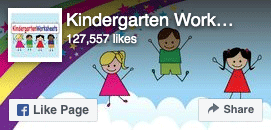
50 Math Problems for Kindergarteners
Practice your math skills with these 50 math problems for kindergarteners , covering counting, addition, subtraction, place value, measurement, and geometry! Answers included.

Michelle Griczika
Key takeaways
- • In kindergarten, mastering counting and understanding the basics of addition and subtraction set the foundation for future mathematical concepts.
- • Utilizing visual aids, like ten frames and shape recognition, can significantly aid in understanding numbers and geometric shapes.
- • Consider using our math app to supplement your child’s kindergarten math skills.
Get ready to take on 50 kindergarten math problems ! These exercises are designed to help young learners develop essential math skills while exploring counting, basic addition and subtraction, shape recognition, place value, and measurement in a fun and interactive way.
We’ve put together 50 engaging math problems for kindergarten to prepare your young learner! These exercises cover five essential skills that every kindergartner needs to master before stepping into first grade. They include:
- Counting : a foundational skill introduced in kindergarten.
- Addition and Subtraction : which start to build numerical skills in kindergarten.
- Place Value: designed to set a strong foundation for the basis of our number system.
- Basic Measurements : introduced to help kindergarten students understand size and comparisons.
- Shape Recognition : a key area designed to help kindergarteners identify basic shapes.
From geometry problems to counting practice, we have a mixture of kindergarten math word problems for your child to practice at home. Once you are done, check your work with our answer sheet.
Let’s dive in!
Table of contents
- Addition & Subtraction
- Place Value
- Measurement
Section 1: Counting
Counting helps us understand numbers and how many things we have, like siblings or how many steps we take.
Turn math into playtime with DreamBox Math
Dreambox math.
Get started for FREE today!

Section 2: Addition & Subtraction
Adding numbers helps us combine different amounts to find the sum, giving us the result of putting them together. Subtraction allows us to see the difference between two numbers by subtracting one value from another, helping us understand the remaining amount.
Section 3: Place Value
Ten frames show us the value of each digit in a number, helping us understand how they add up to make a bigger number.
1. Look at the ten frames. What number do you see?

2. Look at the ten frames. What number do you see?

3. Look at the ten frames. What number do you see?

4. Look at the ten frames. What number do you see?

5. Look at the ten frames. What number do you see?

6. Look at the ten frames. What number do you see?

7. Look at the ten frames. What number do you see?

8. Look at the ten frames. What number do you see?

9. Look at the ten frames. What number do you see?

10. Look at the ten frames. What number do you see?

The math program that drives results
Get started today.
DreamBox adapts to your child’s level and learning needs, ensuring they are appropriately challenged and get confidence-building wins.
Section 4: Measurement
When we measure things, we use the words’ bigger’ and ‘smaller’ to compare them and see which is larger or smaller in size, amount, or value.
1. Which polar bear is bigger?

2. Which snake is bigger?

3. Which Cat is bigger?

4. Which octopus is bigger?

5. Which penguin is bigger?

6. Which frog is smaller?

7. Which turtle is smaller?

8. Which Eagle is smaller?

9. Which Parrot is smaller?

10. Which leopard is smaller?

Section 5: Geometry
We can identify and name different shapes by looking at their features, such as the number of sides and how they are arranged.
1. Name the shape.

2. Name the shape.

3. Name the shape.

4. Name the shape.

5. Name the shape.

6. Name the shape.

7. Name the shape.
8. Name the shape.

9. Name the shape.

10. Name the shape.

Place Value Answer Sheet
Measurement answer sheet, geometry answer sheet, take at home math practice to the next level.
Empowering parents and educators to make math practice more impactful. Plus, your kids will love it.

Quick Links
- DreamBox Math
- DreamBox Reading
- DreamBox for Homeschool
- Professional Services
- Parent Dashboard
DreamBox Learning Apps


Awesome Math Strategies for Kindergarten and the 6 Questions to Ask Your Small Group
Teaching math strategies in kindergarten may be easier than you think. Here are the top math strategies for kindergarten that you can use in your lessons and the questions you should be asking.
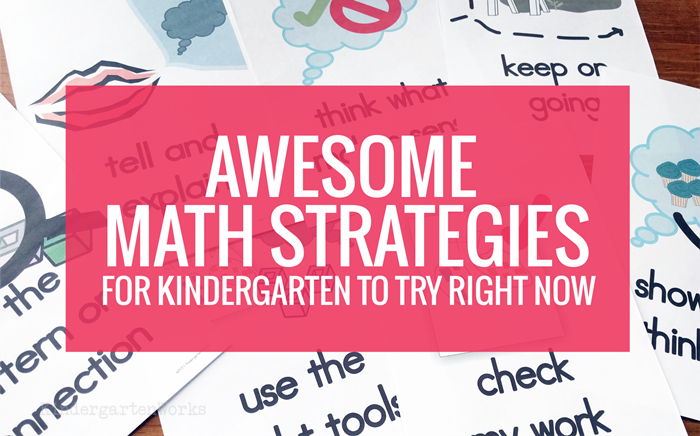
I’ve got everything I’m sharing with you today wrapped up in my Guided Math Pack for kindergarten . That way you can use these math strategies for kindergarten easily.
What are math strategies in kindergarten
You should know that these math strategies for kindergarten came from the Kindergarten Common Core Standards . There is a whole section called “ Mathematical Practice ” that lists the standards below.
Now hang with me. Here are the standards as they are written out. They are {ahem} super exciting so I won’t be offended if you just want to jump past this list.
- Make sense of problems and persevere in solving them.
- Reason abstractly and quantitatively.
- Construct viable arguments and critique the reasoning of others.
- Model with mathematics.
- Use appropriate tools strategically.
- Attend to precision.
- Look for and make use of structure.
- Look for and express regularity in repeated reasoning.
Now, if you ask me – these are hardly kindergarten friendly.
But, as I planned out my guided math curriculum for kindergarten I realized that I needed to make use of them. I was supposed to be teaching them, after all.
How I made them kid-friendly
In order to make use of those silly-stated standards, I desperately needed to make them more kinder-friendly. So each standard got rephrased into a strategy or approach that we could actually use.
For example,
- “Construct viable arguments and critique the reasoning of others” became “tell and explain”
- “Attend to precision” became “check my work”
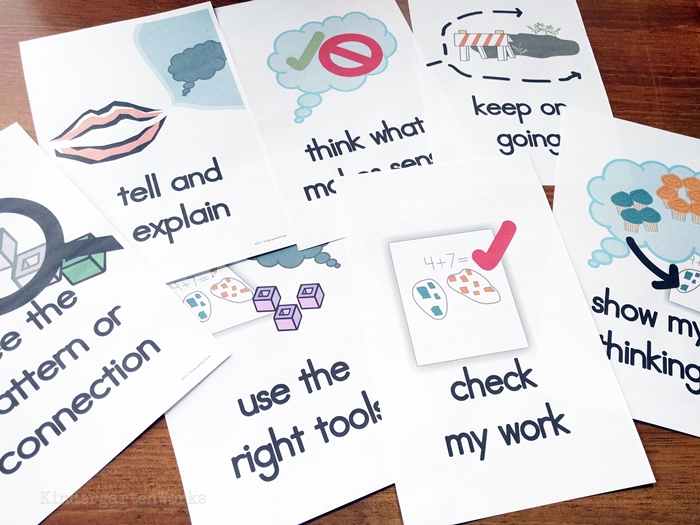
And those kinder-friendly phrases became go-to things for me.
I’m not kidding. Since I was introducing and using them during small group lessons , I was able to refer to them regularly and prompt students with them.
How you can use pictures to teach strategies
Since I work with beginning readers and non-readers in kindergarten, I made icons or symbols for each strategy. This works on the same principle as illustrating guided reading strategies .
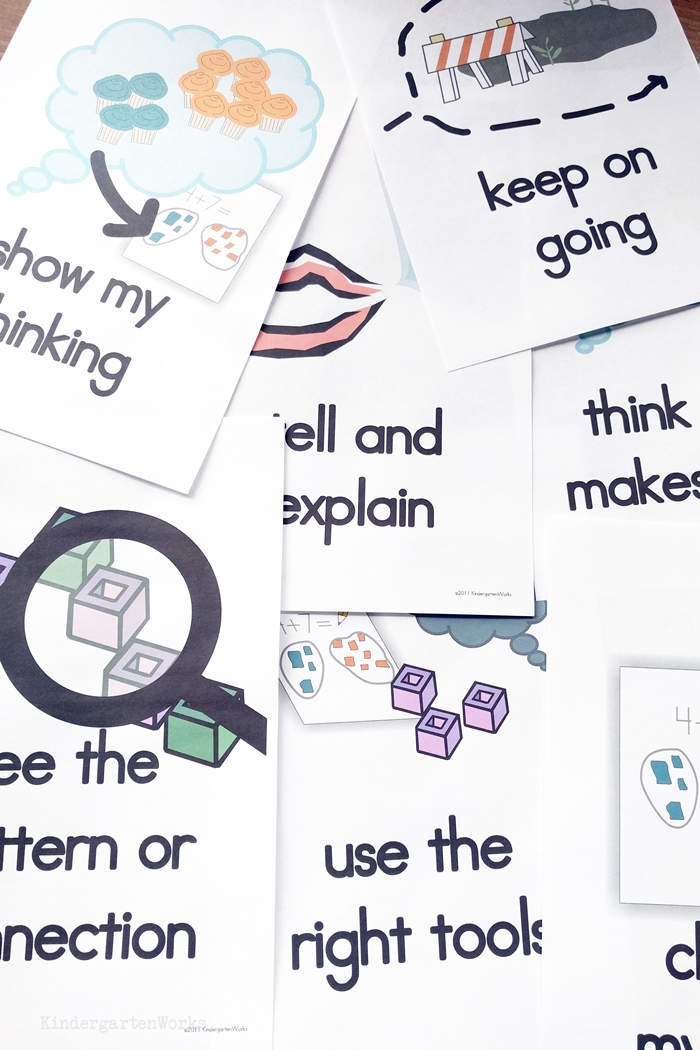
I turned each strategy into posters and cards.
These were integrated into the math prompts my students did in our math journals . They would practice one strategy each time – at the same time as working on content.
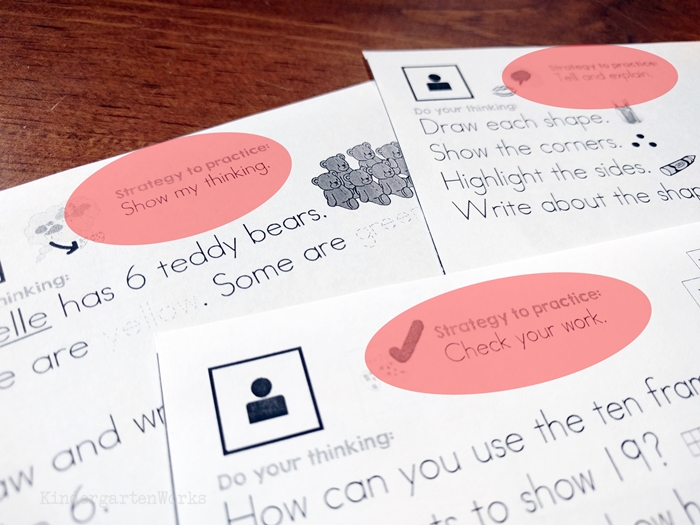
Questions to ask your small math groups
What do these math strategies mean for teaching in small groups?
Well, that meant I had questions I could ask.
- “How can you show what you are thinking?”
- “What tools did you use to figure this out?”
- “Tell us about your thinking. What did you notice?”
- “What would make good sense?”
- “What could you try?”
- “What do you notice?”
Rather than tell my students what to do – or how to solve – I could ask questions to help direct their thinking.
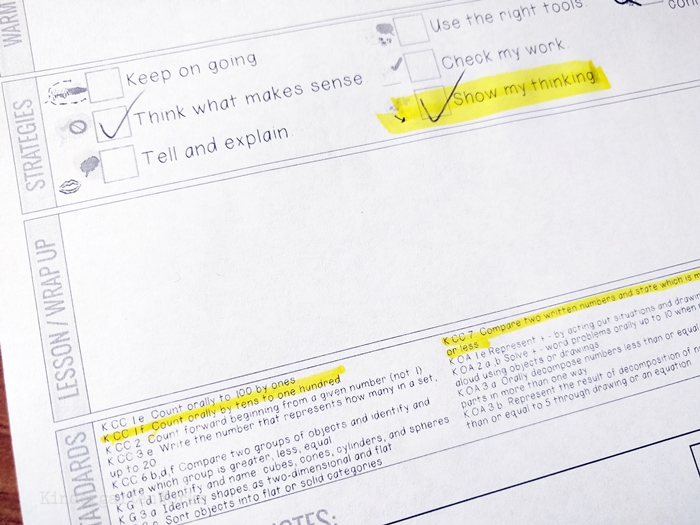
I added these math strategies for kindergarten right into my lesson plan templates too.
If you like these math strategies for kindergarten all done for you – you can get the:
- strategy posters and cards
- guiding questions to ask based on the strategies
- math journals prompts with strategies listed
- lesson plan templates with strategies listed
all in the Guided Math Pack !
If you like what I do here on KindergartenWorks, then be sure to subscribe today. I look forward to sharing ideas with you weekly.
More Guided Math
- Differentiate Math Easier with the Guided Math Pack for Kindergarten
- How to Start Guided Math
- 5 Questions to Ask Yourself When Getting Started With Guided Math
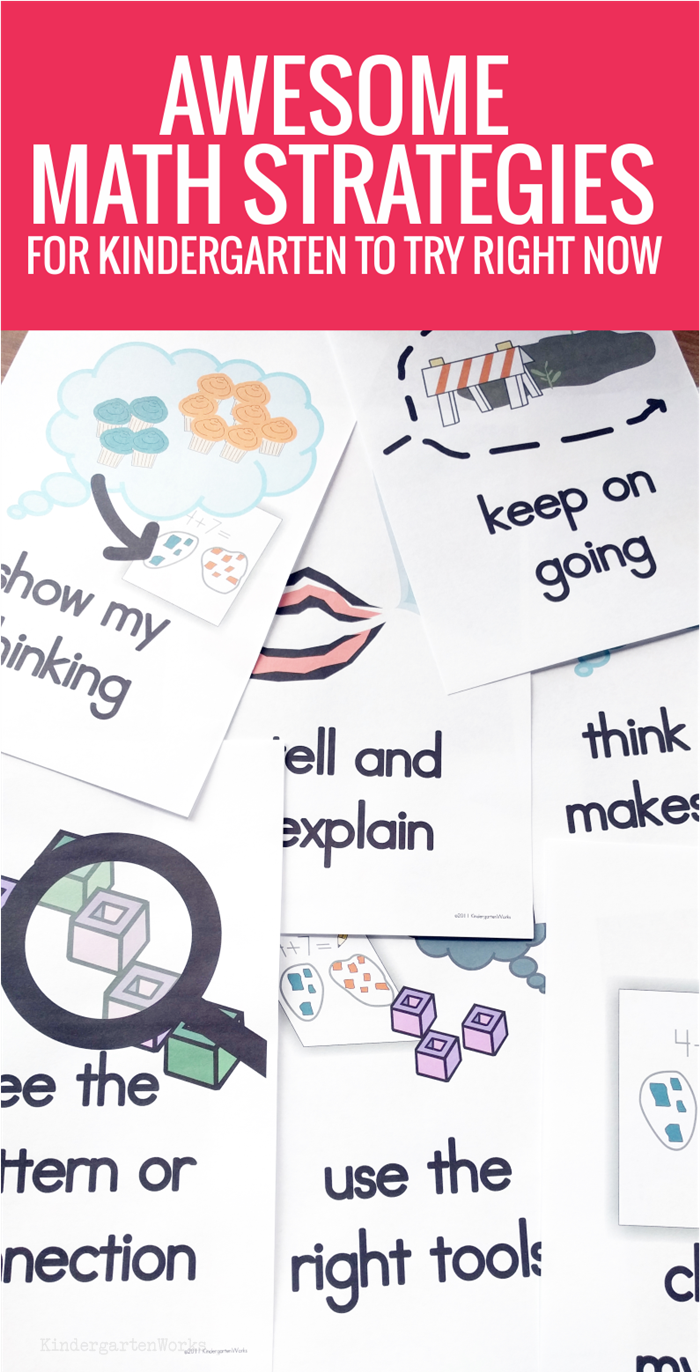
Leslie is the teacher behind KindergartenWorks . She believes in teaching kinders how to be pretty incredible along with teaching them to read, write and think for themselves. She enjoys drinking hot tea, making mud pies with her four kids and sharing what she's learned with teachers.
Similar Posts
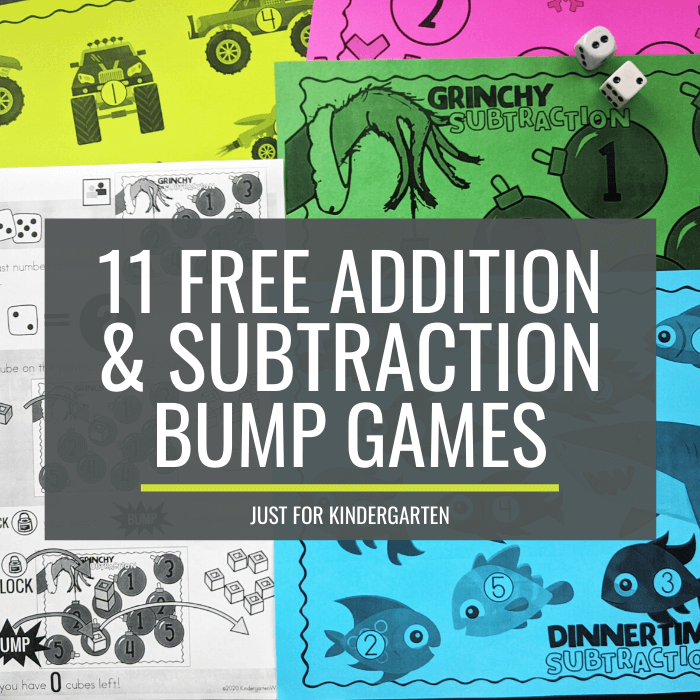
11 Free Addition and Subtraction Bump Games Just for Kindergarten
Work on addition and subtraction in kindergarten by playing games. Here is a collection of 11 free bump gameboards that kindergarteners can use to build their math skills. Bump-style games are perfect for kindergarten because they can be played by a single player or they can be a partner game. These games I’ve made practice these…
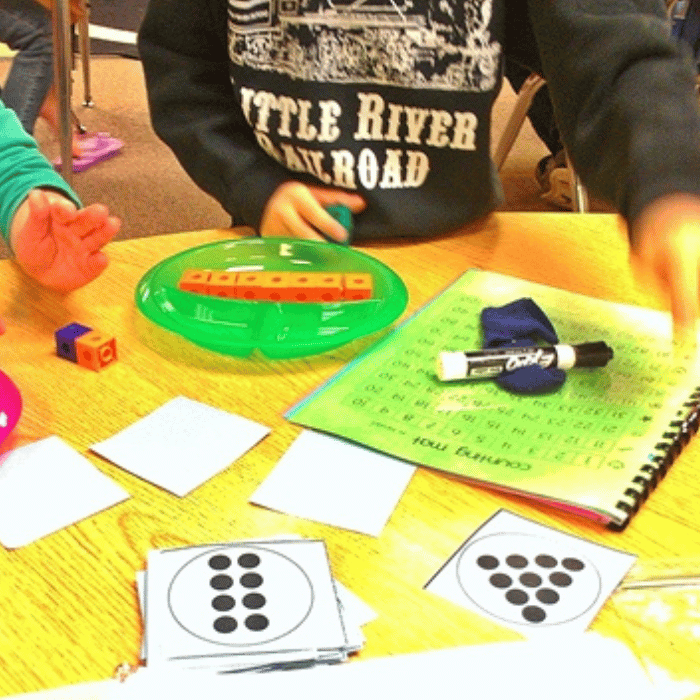
Free Kindergarten Subtraction Game: What’s the Difference
Working on subtraction has been a goal of mine in teaching math to kindergartners. This free kindergarten subtraction game “What’s the Difference?” is one example of how I’m working to teach subtraction in various ways to better meet the needs of my students. Let me share why I’m venturing into teaching math in deeper ways…
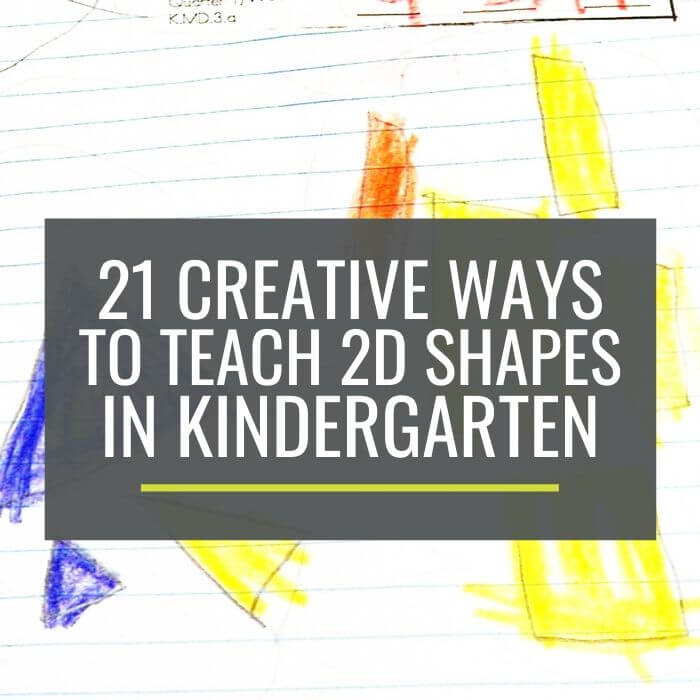
21 Creative Ways to Teach 2D Shapes in Kindergarten
Teaching shapes to kindergarten is part of many standards-based curriculums. When you teach 2D shapes, you’re covering some basic geometry skills your kinders will build from for years to come. Let’s look at how to teach 2D shapes and dig into some 2d shape activities and games to help you cover this topic. How to…

How to Teach Decomposing and Composing Numbers
What we just explored why decomposing and composing numbers really is crazy important in kindergarten. This is part 2 of this series – it’s all about making practicing this skill regularly a cinch in the kindergarten classroom. As a recap, I know that we often call this common core standard “place value,” but really it is…
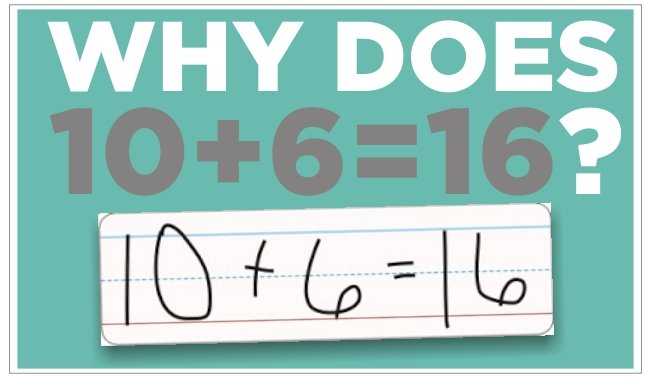
Why does 10+6=16?
This year I have been using small group math instruction to guide my kinders. I’ve shared how its laid out and even a sample lesson called: Composing & Decomposing: A Guided Math Lesson Plan Flow I am very thankful for the insight that these opportunities provided since the way I was doing math in all…
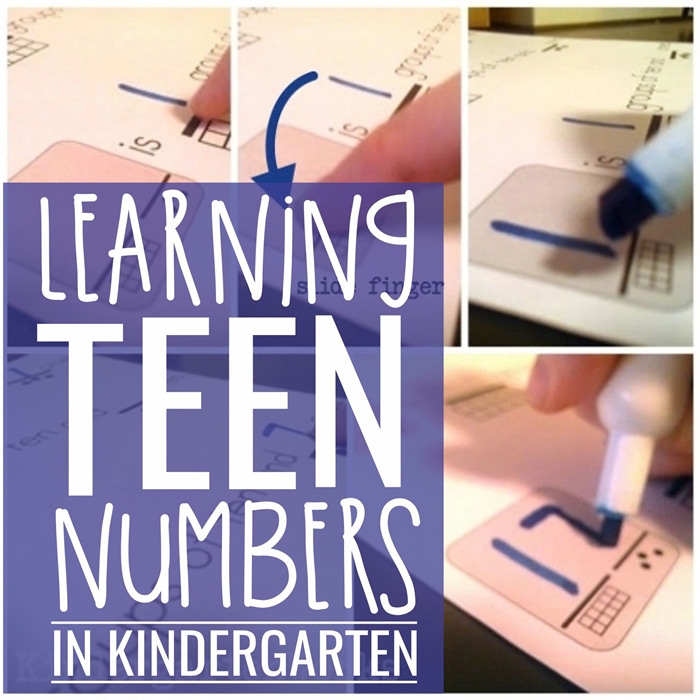
Learning Teen Numbers in Kindergarten
Teaching teen numbers in kindergarten using a composing and decomposing numbers approach. Students learn the meaning behind place value and catch onto numbers 11-19 quickly. Here’s a math lesson I taught and the beauty behind letting kinders explore concepts over and over. Learning teen numbers in kindergarten without just “learning” by rote visualization! In math,…
Leave a Reply Cancel reply
Your email address will not be published. Required fields are marked *
Save my name, email, and website in this browser for the next time I comment.
A Turn to Learn
Ed Tech Integration in the Elementary Classroom
Kindergarten Problem Solving Skills! (Freebies!)
07.16.2013 by Jessica Kings //
The “Problem of the Day” is probably one of my favorite routines for the classroom! I ended up starting this routine as prep work for the story problems that are on the Kindergarten IOWA test… and my kids just love it! It’s the perfect introduction to mental math for little Kinder minds!
I know a lot of teachers do math journals with their kids, which is somewhat similar. I have thought about doing those, but unfortunately the IOWA Test doesn’t allow for students to use scrap paper to solve their math problems, so I use my problem of the day to focus on counting with our fingers.
(Obviously when I teach my addition and subtraction units, we do many more hands on activities, but this is a quick five minute review… or introduction! I actually use the problem of the day with my class long before I teach my addition and subtraction units!)
Anyway… back to this quick routine! (I promise, it takes way longer to explain than it actually takes to do!)

I pick a student to be in the problem, and replace the name in the story with their name.
Then, I have the students turn to their partner for a turn and talk (I have assigned partners in the classroom which change monthly.) I tell the class this little poem:

(This helps avoid the students all saying “I don’t have a partner!” when someone is absent or on the computer.) I tell them to be sure that both their knees are touching – this also helps to make sure that they’re looking at their partner and focused!
Then, I’ll pick a partner to go first (perhaps the partner with longer/shorter hair). That student has to tell their partner the answer and explain their reasoning for it. For example, “I know the answer is two because I started with five fingers up, then put three fingers back down.”
It really interesting to hear the kids reasoning behind their answer. After giving them enough time to discuss, I count backwards from five so the students finish up their answer.
Next: it’s time to see who was listening! I call on students to explain their partner’s answer to me! This really improves their listening skills! I then repeat visa-versa and have the other partner explain their answer.
The kids just love this routine… they really love hearing their names in the story and sharing their answers/explanations with their partner. And the best part… it really improved their listening and math skills and it made a major difference in my IOWA Test scores!!

Here’s a quick preview of how cute the questions look… and they’re super easy to cut as well!

Print them, laminate, and cut the paper into fourths. I keep my problems organized by hole punching the corner of each card and using a binder ring to hold them together.

Then, each day I just turn one page and read the next problem.

To see the bundle for the whole year, click on this picture:
To see each individual month, click the pictures below! Scroll down to April to grab a free month!!!

Share this:
July 16, 2013 at 12:49 am
Looks great! [email protected]
July 16, 2013 at 1:57 am
This will be great for my JK students who aren't ready for math journals!
July 16, 2013 at 1:59 pm
OH so happy for these! I just added them to my cart! They look awesome! Thank you!!! Carolyn Kindergarten: Holding Hands and Sticking Together
Try This Tutorial

Help! Fix My Chromebook… My Mouse is Gigantic!
Try this activity.

Help! Fix My Chromebook… I’m Getting Video Pop Ups!
Popular posts.

IMAGES
VIDEO
COMMENTS
Recording problem solving activities. Prompt students to record the results of most activities, even if they are only able to make a simple picture. Many opportunities for math problem solving will arise in a regular preschool or kindergarten day. Keep problem solving simple and age appropriate; Focus on problems that have open-ended results
These kindergarten math problems will help you teach early math skills in a fun, interactive way! In this blog post, you'll find printable worksheets, task cards, and games to make math hands-on and engaging. Kindergarten is one of the most critical years for young learners. This is where we build a strong foundation in number sense, teach the most basic operations, and give names to the ...
Preschool and kindergarten problem solving activities give children an opportunity to use skills they have learned previously and give you an opening to teach new problem solving strategies. Introduce the vocabulary of solving problems with stories, puppets and everyday situations that occur. "We only have 10 apples but there are 20 students.
Our kindergarten math category includes worksheets for early stages and slightly more advanced levels. They cover numbers, counting, measurement, and problem-solving skills. Additionally, we offer free worksheets on addition, subtraction, fractions, place value, graphs, and patterns.
KINDERGARTEN MATH PROBLEM SOLVING FOR THE SECOND NINE WEEKS-- $6. In this package, students explore addition and subtraction some more, classify and count, compare numbers, explore numbers to 20, and do a lot of measuring (length and weight). KINDERGARTEN MATH PROBLEM SOLVING FOR THE THIRD NINE WEEKS-- $6
• Consider using our math app to supplement your child's kindergarten math skills. Get ready to take on 50 kindergarten math problems ! These exercises are designed to help young learners develop essential math skills while exploring counting, basic addition and subtraction, shape recognition, place value, and measurement in a fun and ...
Teaching math strategies in kindergarten may be easier than you think. Here are the top math strategies for kindergarten you can use in your lessons. ... Make sense of problems and persevere in solving them. ... Here is a collection of 11 free bump gameboards that kindergarteners can use to build their math skills. Bump-style games are perfect ...
I finally finished my first Teachers Pay Teachers packet of Kindergarten Math Problem-Solving Prompts! Click Here! If you've been reading my blog for a while now, you know that I am just a little passionate about math problem-solving. OK, so I'm a big nerd! But since I started using a problem-solving model in my classroom several years ago, I have seen amazing growth in my students' math skills.
Kindergarten Problem Solving Skills! (Freebies!) 07.16.2013 by Jessica Kings // ... but unfortunately the IOWA Test doesn't allow for students to use scrap paper to solve their math problems, so I use my problem of the day to focus on counting with our fingers.
I'm so excited! I have FINALLY finished my Kindergarten Math Problem Solving prompts for the whole year! I believe so strongly in teaching math through problem solving. I've been doing it for 8 years now, and I am amazed every day by the things my kids accomplish. Here's why I love Math Problem Solving: It's inquiry-based. Instead of standing at the front of the room and teaching my kids how ...